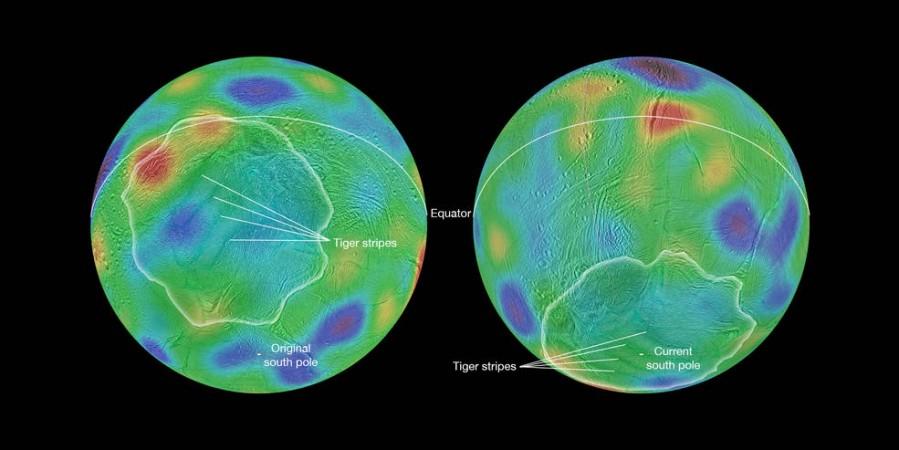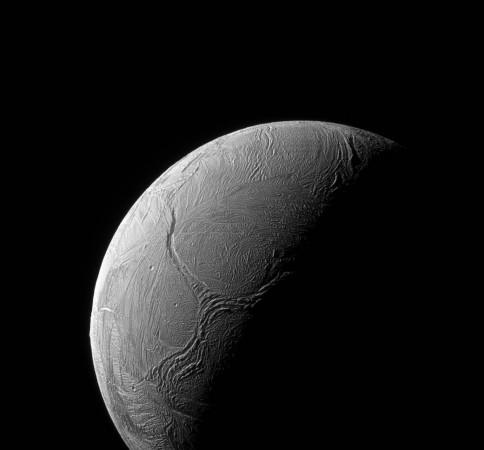
NASA's Cassini mission has discovered that Saturn's icy moon Enceladus may have tipped over in the distant past. Researchers have found evidence that the moon's spin axis -- the line through the north and south poles -- has reoriented, possibly due to a collision with a smaller body, such as an asteroid.
Also Read: NASA's Curiosity rover discovers silica-rich 'halos' on Martian surface
On analysing the features of the moon, the cohort of researchers figured out that the moon seemed to have tipped by 55 degrees, which was more than halfway towards rolling completely onto its side.
"We found a chain of low areas, or basins, that trace a belt across the moon's surface that we believe are the fossil remnants of an earlier, previous equator and poles," said the lead author of the paper, Radwan Tajeddine, a Cassini imaging team associate at Cornell University, Ithaca, New York.

The area around the icy moon's current south pole is a geologically active region where long, linear fractures referred to as tiger stripes slice across the surface.
According to the hypothesis of the researchers, an asteroid might have struck that region when it was closer to the equator.
"The geological activity in this terrain is unlikely to have been initiated by internal processes," Tajeddine said. "We think that, in order to drive such a large reorientation of the moon, it's possible that an impact was behind the formation of this anomalous terrain."
Jets of water vapour and icy particles spray from the tiger stripe fractures were also detected by Cassini in 2005. This point towards the presence of an underground ocean beneath the active south polar terrain venting directly into space.
Tajeddine and colleagues believe that some of the moon's mass got redistributed due to the disruption and creation of the tiger-stripe terrain, which resulted in making the moon's rotation unsteady, which would turn stable again in almost more than a million years.
By the time the rotation settled down, the north-south axis would have reoriented to pass through different points on the surface -- a mechanism researchers call "true polar wander."
The polar wander idea helps to explain why Enceladus' modern-day north and south poles appear quite different. The south is active and geologically young, while the north is covered in craters and appears much older. The moon's original poles would have looked more alike before the event that caused Enceladus to tip over and relocate the disrupted tiger-stripe terrain to the moon's south polar region.
















